Some pilots can hardly wait for Mosaic. It takes all kinds, of course.
 Many aviators want to use Sport Pilot’s no-medical aspect to fly a Cessna or Piper that they can buy inexpensively (or already own). That makes sense. These affordable aircraft are familiar and proven, even if they are products of the 1950s with mostly analog instruments and powerplants that burn 10 to 15 gallons per hour of 100LL.
Many aviators want to use Sport Pilot’s no-medical aspect to fly a Cessna or Piper that they can buy inexpensively (or already own). That makes sense. These affordable aircraft are familiar and proven, even if they are products of the 1950s with mostly analog instruments and powerplants that burn 10 to 15 gallons per hour of 100LL.
Another group, owners of modern LSA, wants a little more weight than allowed by current regulation. Still others may want to fly at night or in IFR or to use an economical LSA for some form of aerial work.
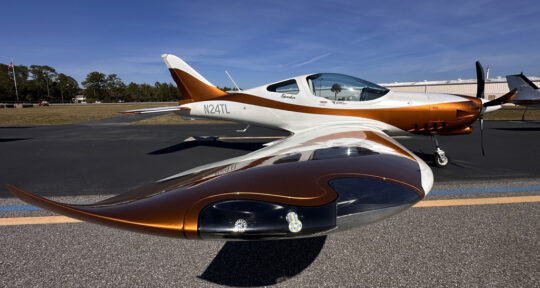 Then we have what I’ll call the Mosaic LSA crowd. These are pilots with larger budgets — perhaps they sold a Cirrus or Bonanza and have equity to put toward a new aircraft. These experienced pilots are accustomed to well-equipped aircraft with generous cruise speeds.
Then we have what I’ll call the Mosaic LSA crowd. These are pilots with larger budgets — perhaps they sold a Cirrus or Bonanza and have equity to put toward a new aircraft. These experienced pilots are accustomed to well-equipped aircraft with generous cruise speeds.
Sparker directly addresses the last group. I got to experience this first-in-the-USA airplane when TL Sport Aircraft owner Trey Murdaugh brought it from Charleston, South Carolina to my home airport, Spruce Creek Fly-in near Daytona Beach, Florida.
Sparker Arrives in America
Spruce Creek Fly-In is a place not an event. It’s the world’s largest private airport with more than 700 aircraft based here. That means lots of pilots, many whom have long flying histories, often with the airlines.
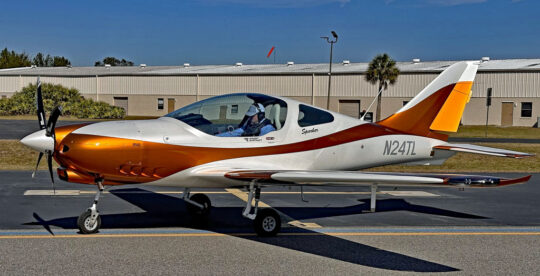
We enjoyed a lovely Florida day in early February as you can see in the images or in the fresh new video below.
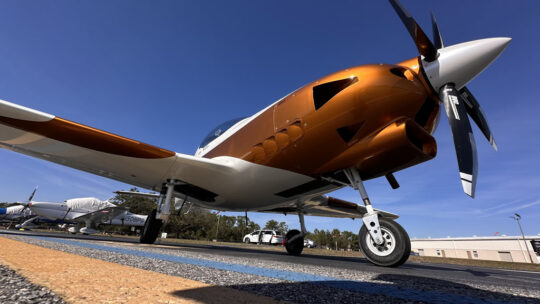
Sparker Deluxe
An aircraft is not just simply a bunch of performance specifications. Creature comforts are also important in this class of flying machine. Sparker satisfies.
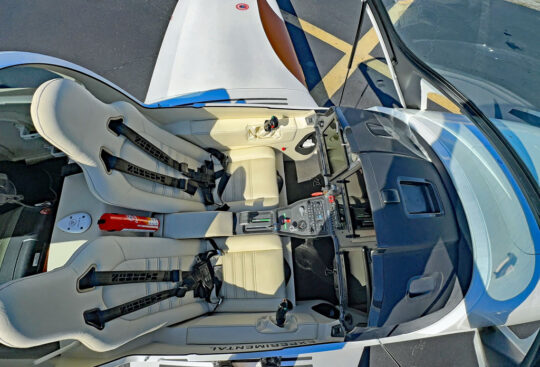
Large comfortable seats are fixed in position but rudder pedals adjust, electrically. A button in front of each outside-mounted joystick smoothly moves pedals to meet your feet. The joysticks bristle with buttons for trim controls, PTT, autopilot off, or frequency toggle.
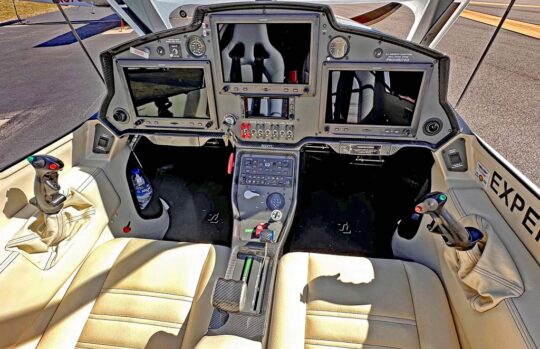
At its new gross weight (“1,652 pounds,” said Trey), Sparker has a useful load that accommodates, get this!, two 230-pound occupants, plus 75 pounds of luggage, plus full fuel of 34.5 gallons. Numbers like that cover most requests I’ve heard. “You’d be hard-pressed to max-out Sparker’s useful load,” Trey concluded.
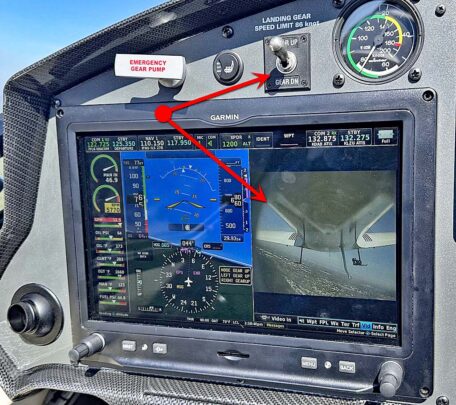
Here’s perhaps the best innovation on Sparker. This is a retractable gear aircraft and you can’t see the gear (as on most low-wing retracts). Usually, designers offer lights or some other gear position indicator. You have to believe the equipment. On Sparker, you can believe your eyes as designers thoughtfully added a nearly-invisible, belly-mounted tail camera that faces forward. This provides unmistakable confirmation of gear position presented to the pilot on one of those big screens. Perfect!
If that’s still not enough, TL designers made some slick panel pull-out trays that can hold a smartphone or iPad mini to use with a navigation app. Oh, yeah, the tray also has a cup holder.
Sparker By-the-Numbers
Sparker descends from a line of impressive aircraft — Sting, Sirius, and Stream — and it shows in the state of the art on Sparker. Using skills acquired over 34 years in business, TL’s newest model is loaded with special features you won’t find on most LSA or mLSA candidates.
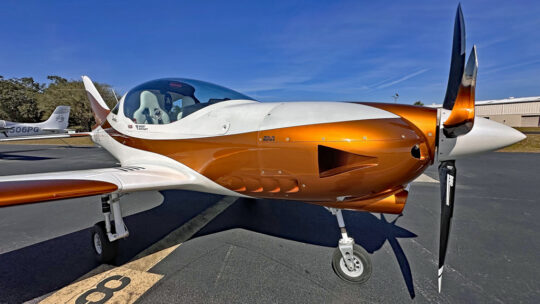
Essentially a side-by-side version of TL’s tandem Stream (article), Sparker uses the wings and tail of the earlier model, which was released in 2015 as Rotax was debuting their 141-horsepower 915iS engine. Our demo Sparker had this potent engine and Trey provides climb rate, cruise speed, and other numbers in the video below.
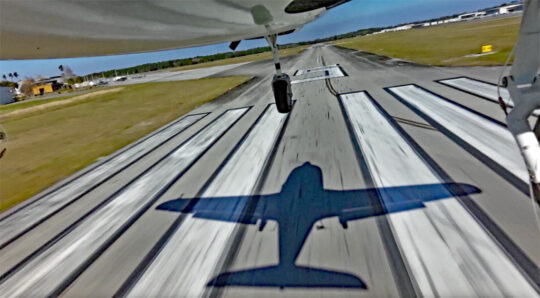
One area I discovered may require TL’s focus as Mosaic approaches. Sparker’s stall was well controlled and mild but it came at 58 knots. FAA proposed a 54 knots clean but many have commented to raise this by a few knots. Regardless, I feel sure TL engineers can compensate.
As we reduced speed to slow flight in preparation for stalls, Trey put flaps down without lowering the gear. Immediately, an unmistakable alarm began to warn a landing pilot that the gear was not extended. You cannot ignore this sound.
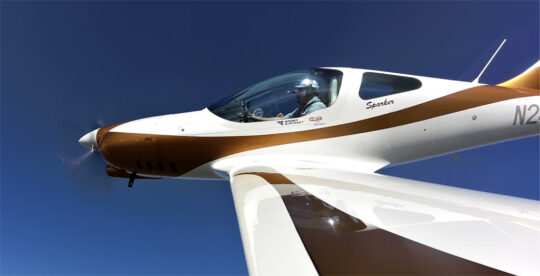
I performed the landing back at Spruce Creek with Trey relaxed after I had demonstrated I could feel the airplane fairly well. Reducing to 90 knots on downwind to lower the gear, we slowed to 75 knots on final before putting down full flaps (45 degrees) to slow to 70 over the numbers. Touchdown was smooth and easily controlled. Brakes are quite strong and we turned off easily before maneuvering to a parking space.
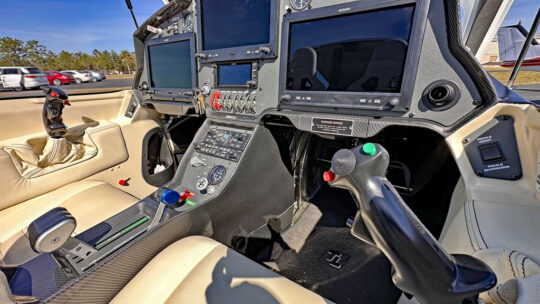
ARTICLE LINKS:
- TL Sport Aircraft, all contact info and content on this website
- TL Ultralights, factory contact info and link to their website
- Earlier article about Sparker with full specifications and more images, on this website
- Earlier article about Stream, the tandem version of Sparker, on this website
- Rotax 916iS engine debut article, on this website
Recorded in early February 2024, this video interview offers many images and in-flight video clips.
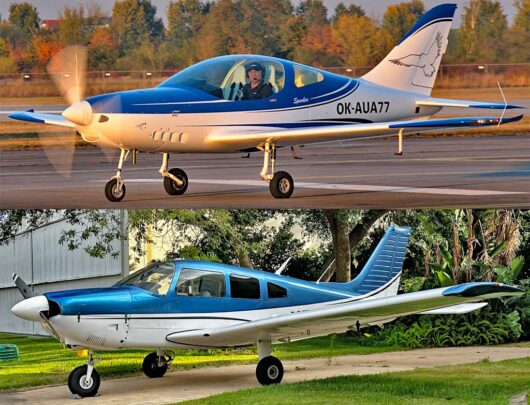
Here’s a visual comparison of a Piper Cherokee and TL’s Sparker. While the Piper can seat more, Sparker is faster and much more modern.



When compared to something like the JMB VL3 how does the Sparker Deluxe stack up?
Similar speeds. Sparker is bigger and even more deluxe. JMB is less costly and well refined with many produced. We haven’t yet seen what JMB might have in development for Mosaic.
Looks like a lot of fun!
The price is, frankly, breathtaking. Yes, the plane is much faster than a PA-28 but it’s also got much less carrying capacity – and it apparently costs the best part of 50% more.
I’d be curious to know what a fixed-gear version could do. With well-faired gear it should not face a huge speed hit, and there would be improvements in safety and useful load, as well as lower manufacturing and maintenance costs. After all, Cirrus builds fast airplanes – and they went with fixed gear.
I heard you say “second quarter of ’25.” Is that the realistic or known date that MOSAIC will take effect?
Amazing plane. How is it called an LSA currently if the MTOW is > 1,320?
FAA has repeatedly said they need 16 months from the close of public comments, therefore, second quarter of 2025. Its official effective date is unknown but I would imagine perhaps May 1st …however, I’m just guessing.
Sparker is an LSA by heritage and design history but must wait for the new regulation to be a Mosaic LSA officially.
Well, how did you like it. Did you put a deposit down for two! This is the plane I told you about 2 years ago. I bet your waiting for the turbine version to come out like the one they have on the Stream.
Finally get to see a review of the Sparker. Are you going to put out a video of your flight?
Could they get a couple more prop blades on it! I guess I’ll find out if they have a 2 or 3 prop match up. Plus is the prop and throttle combined like a Cirrus (probably not on the 4 blade). Couldn’t tell if that was the prop lever (blue handle). The landing gear is very impressive. One of my big issues with LSA and even Van’s airplanes front landing gear. Did you ask Trey if they are going to make a static landing gear version or could the gear stay down? (insurance question) A person can dream can’t he. Excuse my excessive slobbering. Can’t stop drooling! But $327,000 BIG ONES will fix that drooling! LOL
Good job Dan!
Hi Larry! Most of your questions are best put directly to Trey. Regarding a video, one appeared at the end of the article. I hope you saw it. It’s gone over quite well. Thanks for your kind words.
Lovely aircraft. Hypothetical question, if a current sport pilot w/no medical purchases this plane, they legally won’t be able to fly it until MOSAIC goes into effect. Am I understanding that correctly?
Correct. This is one of the main anticipation points of Mosaic.
Hello Dan,
Please keep posting these updates, theyre great and very informative.
I recently asked for a quote on a JMB VL3. Im 70 and have over 1500 hours in many types of airplanes. No accidents and good health. The response was that Insurance companies shy away fro us older guys and reflect that bias in the quotes. The quote was verbal at “around 25$ for the first year”. What a cold shoulder. My SR22 was only 3500$. Good luck, check your policy cost ahead of time.
Sooo…most of the $327,000 is for the cupholders.